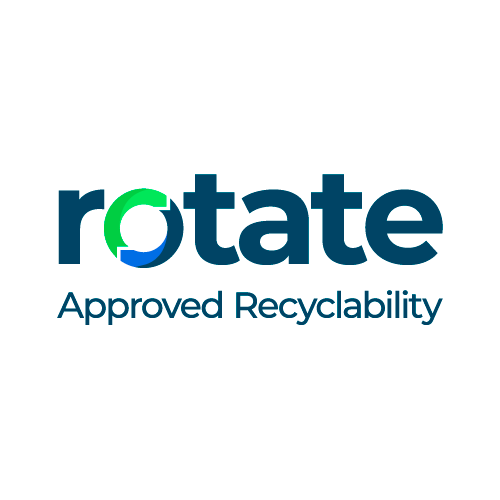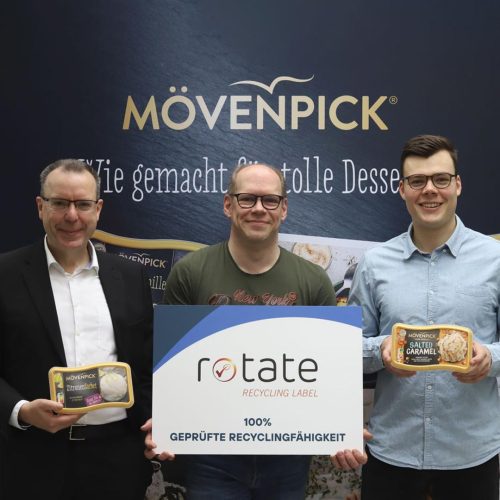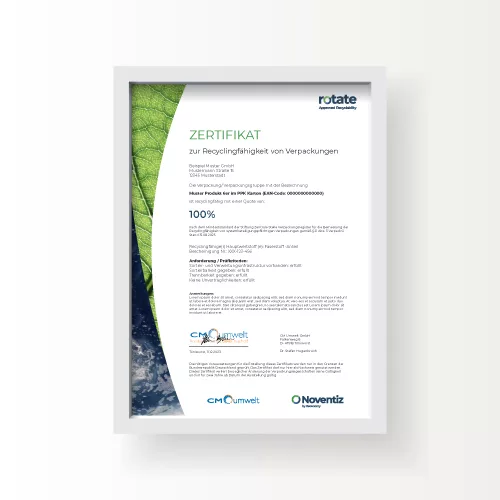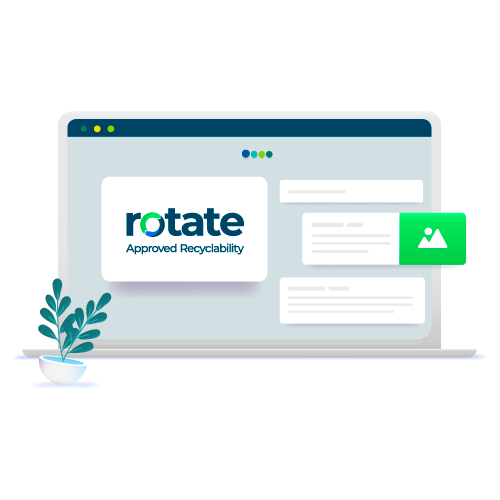Why should you assess your packaging for recyclability?
Your green conscience:
The easier a material is to recycle, the greater your contribution to environmental and climate protection will be.
Environmentally conscious consumers:
More and more consumers are interested in highly recyclable packaging. Surveys have shown that they are willing to pay more for green solutions.
The German Packaging Act sets targets:
To meet the objectives of the German Packaging Act, packaging must meet the minimum requirements for recyclability as defined by the Central Agency Packaging Register (ZSVR) and the Federal Environmental Agency (UBA).
Retailers show the way:
Retailers are leading by example, particularly with own brand products. The majority of retailers have already considerably reduced the amount of packaging material they use and are aiming for fully recyclable packaging.
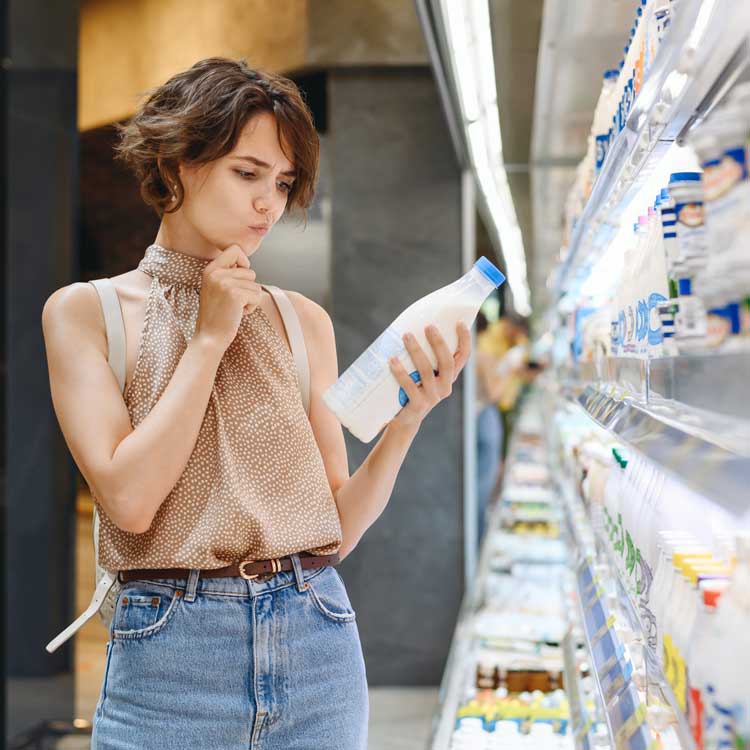

How recyclable is your packaging?
It is not only environmentally conscious consumers who are calling for highly recyclable packaging, but the German Packaging Act (VerpackG) has also set this goal. As a result, businesses are asking themselves: How recyclable is my packaging?
rotate, our recognised test method, which is based on the applicable minimum standard set by the Central Agency Packaging Register, will help us find out for you.
Our services: Assessing, certifying and optimising packaging recyclability
We will analyse your packaging subject to mandatory participation and develop suggestions for improvement to achieve a future-oriented packaging design. With rotate, Noventiz’s own label, we have a modular solution for assessing and optimising the recyclability of your packaging.
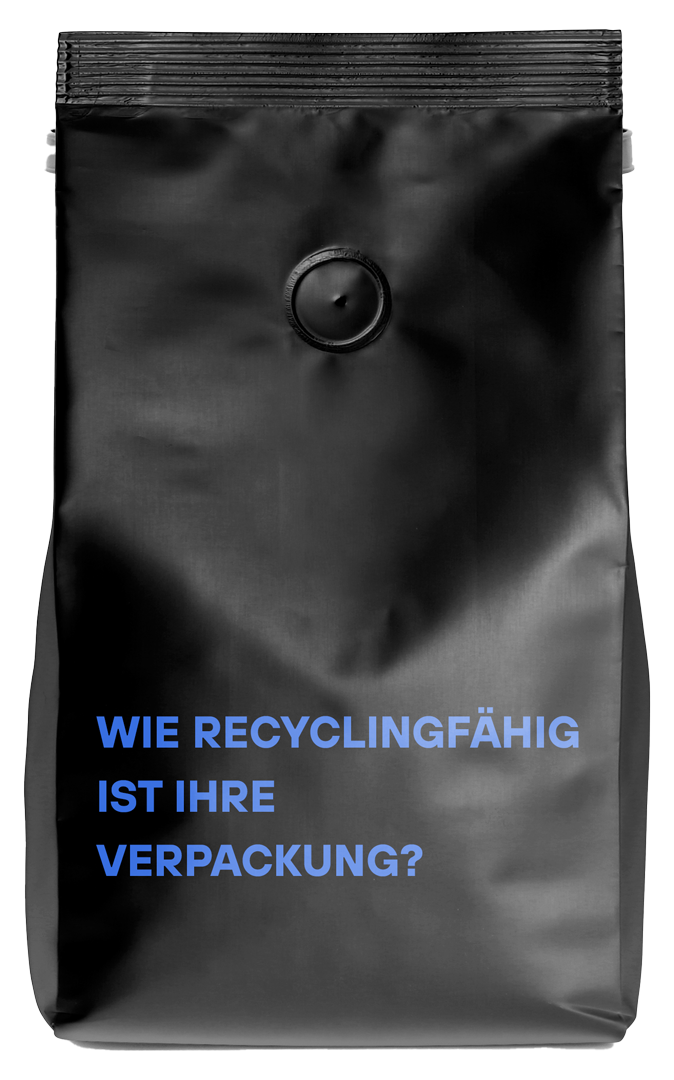
We use our recognised test method to assess the recyclability of your packaging subject to mandatory participation.
We will advise you on how to improve the level of recyclability.
We certify the analyses, including an assessment result and recycling rate.
We will support your marketing activities and presentation of results with our rotate brand logo and with website content.
Protecting the environment together
We support your sustainability communication
What does the German Packaging Act say about recyclability?
Since 2022, the German Packaging Act has set specific recovery rates for different types of materials. One of the factors that can help to achieve the target rate is to design the packaging that is as recyclable as possible. This provision is in line with a number of EU measures to manage and reduce the amount of plastic waste generated. One of these measures is the additional “plastic tax” of 80 cents per kg of non-recycled plastic (for each Member State) from 2021. This will increase the importance of recyclable packaging design for businesses.
What are the minimum criteria for assessing recyclability?
In order to assess the percentage of material suitable for recycling, the following minimum requirements must be checked and taken into consideration:
Infrastructure
A sorting and recovery infrastructure must be in place to enable high-quality material recycling of the packaging.
Sortability and separability
The high-value material in packaging must be sortable and the packaging components must be separable to enable high-quality material recycling.
Non-recyclability
None of the materials contained in packaging or packaging components should be unsuitable for recycling as components that can’t be recycled would prevent successful recovery of the packaging.
If these requirements are met, the maximum recyclability is determined by the share of recyclable materials available for recycling in relation to the total volume of the packaging.
BEST PRACTICE
Product protection and recyclability of ice-cream packaging by Mövenpick (Froneri)
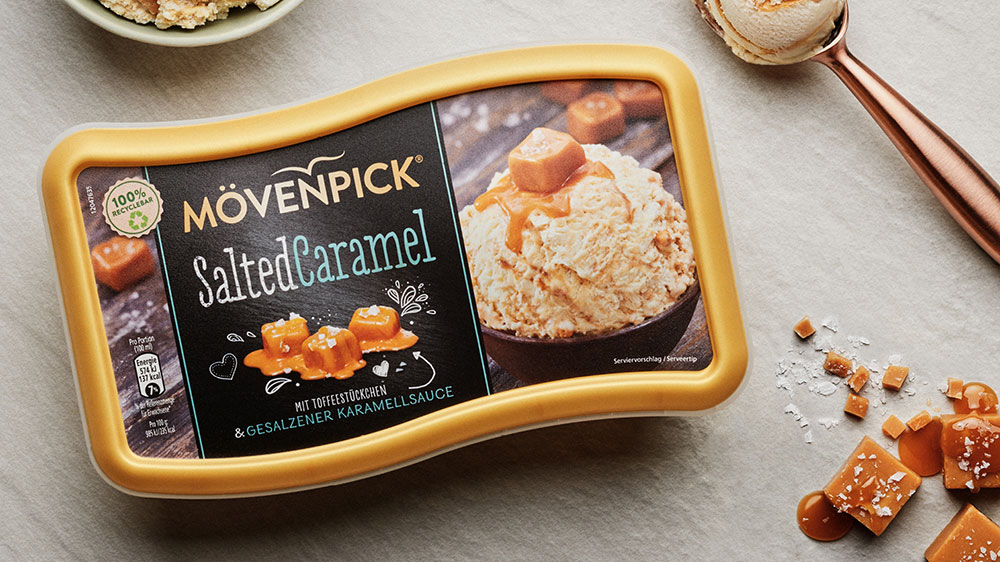
Karsten Storck
Froneri Ice Cream Deutschland GmbH
We’re very happy with the services Noventiz provides. We’ve been working with them for a very long time now, and the relationship has always been professional, fair and friendly. Thanks to our long-standing partnership, we’re well aware of the company’s special expertise, not least in the field of packaging licensing. We plan to build on this and work with the Noventiz team on future projects.
Karsten Storck
Froneri Ice Cream Deutschland GmbH
Thanks to the rotate recycling label, around 44 million items of packaging that were in circulation in 2022 have been certified as “100% recyclable”.


I would be happy to advise you on how to assess recyclability. Ask for a quote now – no strings attached.

- Peter El-Gazzar
- +49 221–800 158 420
- rotate@noventiz.de
- Connect on LinkedIn
Peter El-Gazzar
Project Manager for rotate
My recommendation to any company that places packaging on the market: Familiarise yourself with the issue of recyclability as early on as possible! There are government plans to introduce another fund-based model similar to the existing Single-Use Plastics Fund – the Federal Environmental Agency has already commissioned a report. This would result in significant additional costs for initial distributors of any packaging that is not highly recyclable.
Here’s what our customers say about rotate
Andrea Greif
hitschler
When it came to evaluating the recyclability of our packaging, Noventiz provided us with reliable and competent advice.
Karsten Storck
Froneri
Thanks to the hands-on recommendations from Noventiz, we were able to design future-proof, recyclable packaging. Working with such a professional partner is a pleasure.
Naime Schimanski
Rügenwalder Mühle
Having been certified by Noventiz is proof of the excellent recyclability of our packaging. It underlines the fact that our focus is not just on product quality, but also on packaging quality.
Kevin Hendzlik
Fresh Packing
Just send in your packaging, have its recyclability checked against the latest minimum standards and find out the degree of recyclability. Optimization proposals are included if you wish. Perfect! We wholeheartedly recommend Noventiz.
Salim Zor
Wolfram Berge Importhaus für Delikatessen GmbH & Co. KG
We were wondering how recyclable our packaging was. We wanted to be prepared for the future.
For Noventiz, as a recycling company with many years of expertise, the inspection was easy. Everything worked great.
Andreas Behrend
MB-Karton Ernst Behrend GmbH
Noventiz gave us very competent advice on the recyclability of our packaging. We have had several audits and certifications and are more than satisfied. 100% recommended!
Hermine Kloos
Gudrun Sjödén GmbH
Noventiz is a competent partner for us, who always has our company’s best interest at heart and advises us on the recyclability of our packaging. The certified packaging perfectly matches our company’s green heart.
Yvonne Fiedler
Petra Haushalts- und Industriereinigungsmittel GmbH
Highly recommended! Noventiz provides us with a single point of contact who advises us on ‘all things packaging’. Most recently, we have had our packaging tested for recyclability and certified. We’re more than satisfied!
Folke Poggenburg
ECO°COOL GmbH
The rotate assessment and certification of our packaging was quick and smooth.
Unlike with an online assessment, we feel we are on the safe side with the expert know-how of a certification company.
Excellent work meets excellent packaging solutions. We are very satisfied.

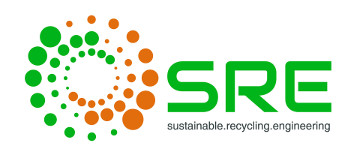
Interview: Here’s what an assessor says about the process of assessing recyclability
Interview with auditor Dipl.- Ing. Thomas Staudt from SRE GmbH. Thomas Staudt has worked in the field of materials and waste management assessment. He is one of the rotate auditors.
To assess recyclability, we need detailed information about the composition of packaging materials. This information is indicated on the packaging’s data sheet and confirmed by a packaging sample provided by the customer. Let’s take a plastic cup with a paper sleeve as an example. The question is: What is the percentage of each part? In order to measure the recyclability of packaging subject to mandatory participation, we follow the minimum standard set by the central register (Section 21, para. 3 of the German Packaging Act), which is revised annually.
Customers can upload the data sheet specifying the packaging materials through the Noventiz online portal. Once we have received a sample of the packaging, we will start to inspect and test it. We always use the applicable minimum standard set by the central register. Once we have assessed the level of recyclability, we issue a certificate, which is valid for two years. As a next step, the customer can ask us to optimise the packaging. Because we want to provide a reliable and realistic assessment, we will need to physically hold the packaging in our hands and look at it closely. This allows us to assess how the packaging would perform in a sorting facility. In my opinion, a mere online assessment is not as conclusive.
There are a number of factors:
1. Infrastructure: Is there infrastructure in place to sort the packaging? Are there any characteristics that would make it difficult to recycle, such as silicon cartridges for certain types of plastic? These questions are answered on the basis of the existing specifications. If a packaging meets certain specification criteria, it can be easily sorted.
2. A Sortability: Can the packaging be sorted in the plant using optical sensors, such as infrared technology? Different types of plastics, paper and board, composites, beverage cartons, glass, paper and wood can obviously be sorted. For packaging that does not clearly fall into one of these categories, we carry out specific optical sorting tests in our laboratory.
2. B Separability: To enable recovery, materials or their components must be sortable. This depends on criteria such as the density of polyolefins or the wet strength of paper packaging.
3. Incompatibility: Substances or combinations of materials that would not allow for successful recovery are not suitable. An example is polyethylene packaging with a PVC coating.
The exact level of recyclability is determined by the distribution of individual components in the packaging or the main recyclable material, which determines the level of recyclability at a particular facility.
Ideally, recycling is considered at the design stage. That’s why it’s important to think about recycling at the beginning of a project. The most important factor is to keep the number of different materials as low as possible. The fewer different materials, the easier it is to recycle. And you should always ask yourself if recovery is possible using the existing recycling infrastructure. See recyclability criteria
Thank you, Mr Staudt!
Click here to request a quote for rotate
FAQs on assessing recyclability
Packaging must be produced and distributed in such a way that the volume and mass of the packaging is kept to a minimum, and that reuse or recycling is possible. The main point is the increased rate compared with those in the Packaging Ordinance. They are 75% higher than those in the Packaging Ordinance for the reuse of plastics – with a lower suitability for recycling of plastic packaging.
- There must be an infrastructure for sorting the packaging.
- The high-value material in the packaging must be sortable, and the packaging components must be separable to allow effective material recycling.
- None of the materials contained in the packaging or packaging components must be unsuitable for recycling, thus preventing successful recovery.
Customers can upload the data sheet specifying the packaging materials through the Noventiz online portal. Once we have received the empty packaging, we will assess and test it. We always use the applicable minimum standard set by the central register. Once we have assessed the level of recyclability, we issue a certificate, which is valid for two years. As a next step, the customer can ask us to optimise the packaging.
In order to measure the recyclability of packaging subject to mandatory participation, we follow the minimum standard set by the central register. The assessment is based on the version of the minimum standard valid at the time of testing.
Our assessment is based on the infrastructure that exists in Germany. Each country has a unique system for collecting, sorting and recycling waste. If a country has a similar infrastructure, you can assume that the result will be valid there.
A certificate is valid for a minimum of two years from the date of issue. If the quality or quantity of the packaging changes from the components originally tested, the certificate will no longer be valid.
Overall packaging:
This is the empty packaging as a whole, including its components, such as labels, sealing foil, lids and closures, adhesive applications, etc. It is not permitted to assess the recyclability based on the theoretical separation of the packaging into its individual components. However, this rule does not apply to combination packaging.
Combination packaging:
Combination packaging is sales packaging consisting of several components made from different materials that can be manually separated.
After a positive assessment, it is possible to use our rotate brand logo on the packaging on the basis of a brand utilisation.
